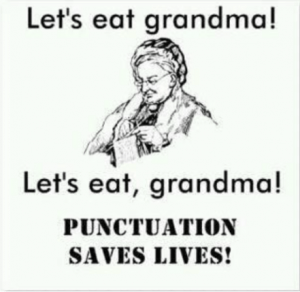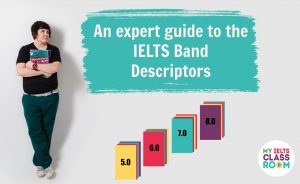
IELTS Punctuation
IELTS Punctuation
OK, I am going to be honest, punctuation isn’t the sexiest topic. But, if you are trying to achieve a 7.0 or higher in your IELTS writing test, then you have to make sure that you are able to use commas, capital letters, and full stops accurately. Sadly, this is not always the case, and nothing makes me sadder than having to award a candidate a 6.0 for GRA because their punctuation was totally uncontrolled. So, join Nick and I today for a whistle-stop tour of the most important IELTS punctuation rules. Trust me, it’s not as boring as it sounds!

Below, you can find a summary of the episode, which includes all of the links to useful materials and the times of each part of the discussion (so you can go directly to the part you want to listen to) 🚀
Subscribe to My IELTS Classroom podcast on Apple podcasts here
Subscribe to My IELTS Classroom on Google podcasts here
Podcast Summary: IELTS Punctuation
00:00 – 13:04 – Introduction – three big pieces of news!
- Apple has launched a new podcast hosting site, so if you are experiencing difficulties finding our old episodes this week on Apply Podcasts, then that is why. Hopefully, everything will be resolved shortly, but you may want to subscribe to the show to ensure that next week’s episode goes straight to your newsfeed.
- A number of students have reported that their speaking tests were conducted via a computer this week. Just to be clear, these were students sitting the regular IELTS CBT and PDT not the IELTS Indicator test. We are not sure why this is happening. It may be to allow face-to-face tests to continue in areas where COVID is still a problem, or it may be the sign of a more permanent move to an online format. In any case, you should be prepared that the speaking component of your test may happen via a computer.
- Next week is the one year anniversary of the launch of the My IELTS Classroom podcast! Please help us celebrate by emailing us to let us know how we have helped your IELTS preparation, or what your favourite episode is, or what you would like us to cover in future episodes. Nick and I would love to hear ANYTHING about the podcast from you!
Learn why punctuation is important in this free lesson about the IELTS Band Descriptors
13:05 – 22:54 – Capital letters and using spaces
This may seem like basic rules, but the first IELTS punctuation you should check is your use of capital letters. In general, most of your sentences in IELTS will have just one capital letter at the start of each sentence. However, you may also need to use capitals where you are writing:
- names of people or companies
- the names of countries, cities, nationalities and languages
- days and months of the year
- subjects studied at school or university
For some reason, we see a lot of students using a capital letter to state a sentence after a transition signal. Please never do this. If you start a sentence with “On the one hand” or “In addition” or any other transition signal, you need continue with a small letter after the comma.
In addition, People often put on weight when they work a sedentary job. = incorrect
In addition, people often put on weight when they work a sedentary job. = correct
We also see some very strange spacing in IELTS essays that are typed. It is hard to know if IELTS examiners punish this as it would seem unfair to have one rule for the paper-based test and one for the computer-based test, but I still think that it is worth noting that in English we ways have once space between words, and you should never put a space before a comma or a full-stop.
When writing , you should never have a space before a comma and a full stop . = incorrect
When writing, you should never have a space before a comma and a full stop. = correct
Want to know how the examiner will apply the band descriptors when marking your IELTS essay (including punctuation)?
Then download a copy of our FREE e-book, which explains how each of the four marking criteria is applied and includes the most common errors made by test-takers. Just click here for your copy.

22:56 – End – Using commas correctly
Alright, this is where the real meat of the lesson starts. I don’t know why but commas really do seem a mystery to most IELTS test-takers. They are either entirely missing from a student’s work, or they look like they have been sprayed from a machine gun randomly all over the paper! The problem is that commas have the power to drastically alter the meaning of a sentence, and their wrong use can easily lead to fragments or, much word, dreaded run-on sentences. In the episode, we will cover how to use commas correctly in
- compound sentences
- complex sentences
- with transition signals
- in a list
- with relative clauses
There is a lot in this section of the podcast, so if you would like to read detailed notes on each of these uses of commas (and more), then you can refer to my previous blog post by clicking here. In the post there are clear examples of each use, and details of common mistakes made by students when using IELTS punctuation.

